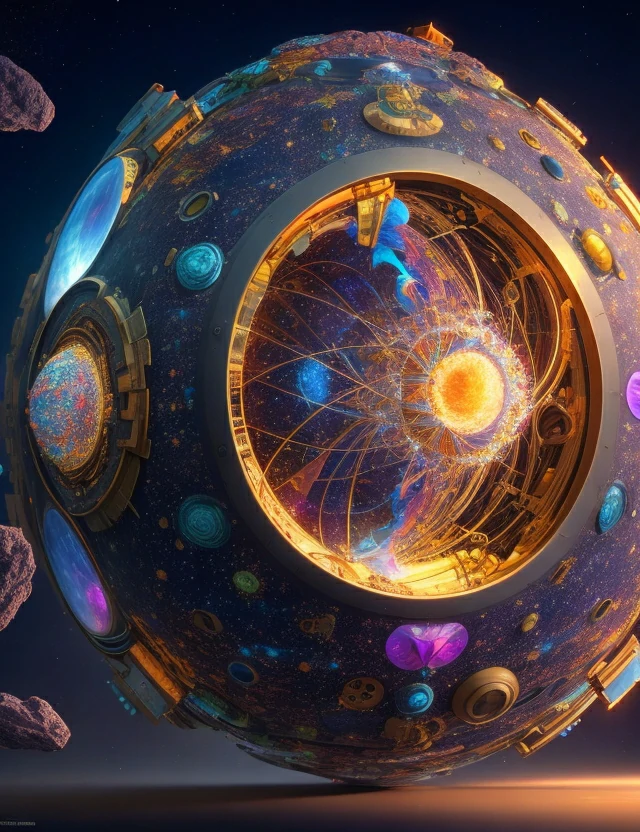More than ten years ago, the famous European Laboratory for Elementary Particle Physics, or CERN, in Geneva, brought together hundreds of applauding and cheering researchers in one of the most exciting moments for scientific research in this century.
The reason is that the largest structure ever created by man, the Large Hadron Collider (LHC), had proven the existence of an elementary particle. Although many more people worked on its theorization and subsequent discovery, it was this researcher who gave the Higgs Boson its name.
What is this particle and why was its discovery so important?
First of all, to know what the Higgs Boson is, it is essential to take into account the concept of mass. Mass is usually defined as the property of matter that expresses the resistance to change in the motion of a body. Mass is independent of weight, although in our everyday experience they are two equivalent concepts. The proof of this is that an iron ball has the same mass here as on the Moon. But on the Moon, its weight will be six times less because the gravitational attraction decreases in that proportion.
The concept of mass changed in the 20th century, with Quantum Mechanics; it allows the study of the mechanism by which elementary particles obtain their mass; according to Quantum Mechanics, particles do not behave in the same way as objects of ‘normal’ size. «In Quantum Mechanics, particles and waves are almost equivalent concepts; simplifying, it can be said that particles propagate as waves (…) and manifest themselves as corpuscles when their position is measured». cita físicos Alberto Casas y Teresa Rodrigo (2012, Editorial CSIC)
To describe such small sizes we need tiny units of measurement, such as the femtometer, which is equivalent to one billionth of a meter and roughly corresponds to the radius of a proton.
Another aspect to take into account is the concept of magnetic field; for example, we are used to perceive a magnetic field when a magnet attracts another magnet; physicists work with what is called the Higgs field to explain the mass of elementary particles. Like a piece of metal passing through the magnetic field of a magnet, all particles are under the influence of the Higgs field.
Where is this Higgs field?
Normally, a magnetic field has a limited area of influence, but the Higgs field is everywhere. Even in the vacuum. This means that even the vacuum is not completely ‘empty’, because it is at least occupied by the Higgs field.
Sound can also propagate through water, wood or metal… But it always needs a medium through which to be transmitted; in space, since there is nothing to propagate it, there is no sound, but although there is no air, in space there is a Higgs field, which is everywhere (even inside and outside your own body) and permeates everything; and quoting again the physicists Alberto Casas and Teresa Rodrigo; «We know that when we shake a liquid, for example the water of a pond, waves are produced. Well, the equivalent of those waves would be Higgs bosons».
According to Quantum Mechanics, particles are waves and corpuscles at the same time. So particles are the elementary excitations of fields. In this case, the Higgs boson is an excitation of the Higgs field, which can only be produced and detected in accelerators like the LHC in Geneva.
How do you explain particle mass?
Imagine we have an electron wandering around in the vacuum. As we now know, the vacuum is ‘filled’ with this Higgs field; as it passes through, the electron interacts with that field and that interaction is what gives it its mass; particles that interact more with the Higgs field have more mass.
What do we call interacting more?
Another key to the Higgs mechanism is the existence of a constant, called the Yukawa coupling, which mathematically defines the strength of the interaction of each particle with the Higgs field; since this coupling is different for each particle, each particle has a different mass.
What did the LHC experiments ATLAS and CMS present, on July 4, 2012?
To stir up the Higgs field and thus produce the coveted bosons, very high energy must be concentrated in a very small spot, and this is what is achieved at the Large Hadron Collider. The LHC allows protons to collide at very high speeds, close to the speed of light. And finally, on July 4, 2012, scientists were able to present data verifying the existence of a particle that possessed the characteristics predicted 50 years earlier.
